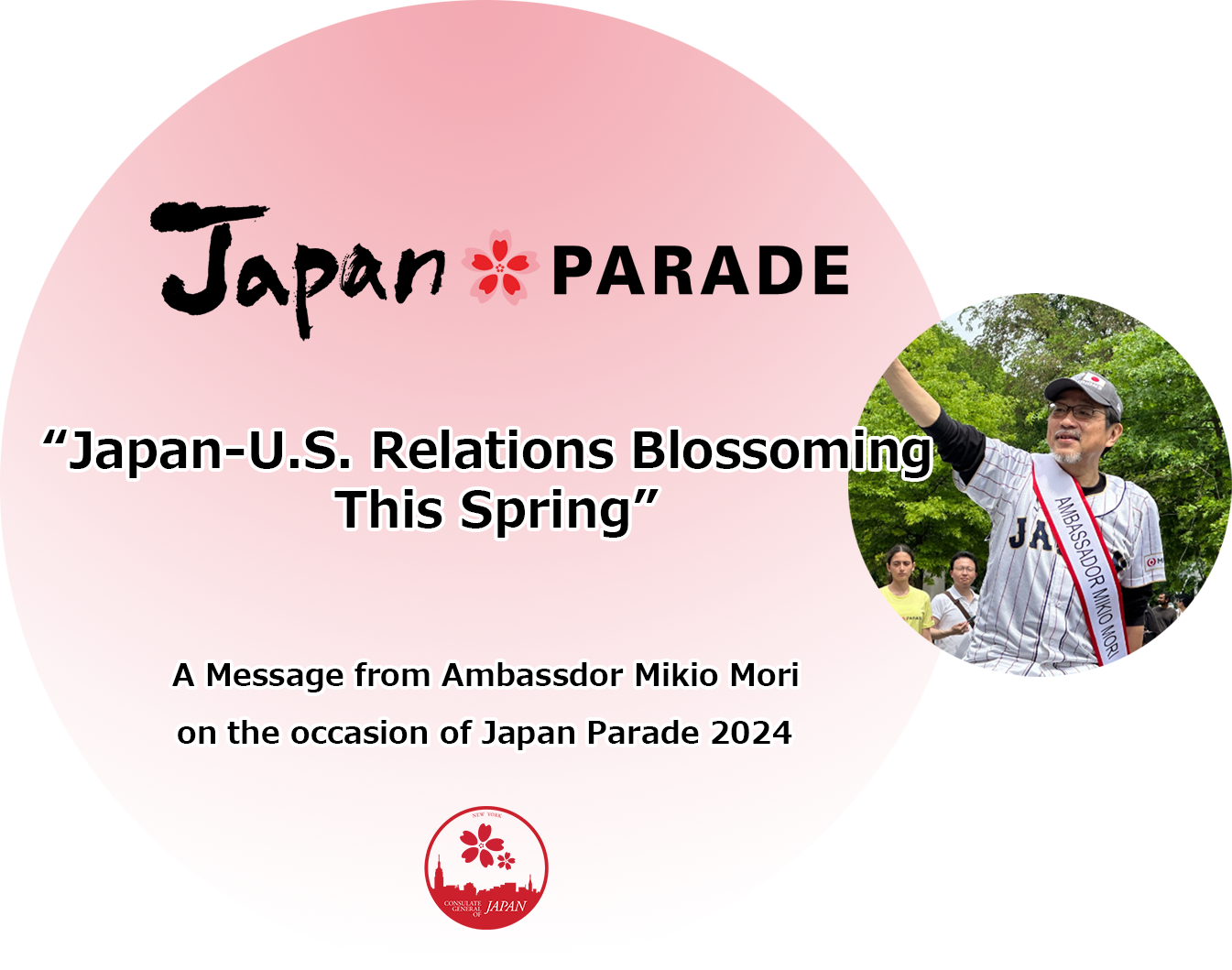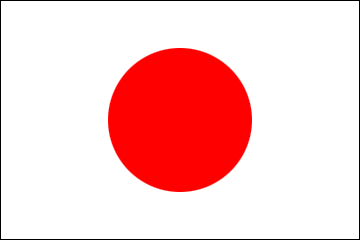"Japan-U.S. Relations Blossoming This Spring" - A Message from Ambassador Mikio Mori
2024/5/10
 America’s understanding of Japan has come a long way since I studied here in the eighties. At the time, I was one of only a few Japanese students at Williams College in Massachusetts and would often field questions from my classmates about samurai culture based on what they had seen in the original TV miniseries “Shogun,” which painted an exoticized picture of Japan. Now, more than 40 years later, the new “Shogun” miniseries presents the narrative from a Japanese perspective, capturing the complexities of Japan’s culture and the many global interactions and influences it had been exposed to in the late 16th century. And it’s a smash hit! The show is proving that authentic depictions of Japanese history, culture, and art make for compelling stories for American audiences.
America’s understanding of Japan has come a long way since I studied here in the eighties. At the time, I was one of only a few Japanese students at Williams College in Massachusetts and would often field questions from my classmates about samurai culture based on what they had seen in the original TV miniseries “Shogun,” which painted an exoticized picture of Japan. Now, more than 40 years later, the new “Shogun” miniseries presents the narrative from a Japanese perspective, capturing the complexities of Japan’s culture and the many global interactions and influences it had been exposed to in the late 16th century. And it’s a smash hit! The show is proving that authentic depictions of Japanese history, culture, and art make for compelling stories for American audiences. Today, America’s interest in the real Japan is evident at every level of society. During Prime Minister Kishida’s recent visit to the United States in April, and in addition to the Congressional speech on the Japan-U.S. global partnership that was welcomed by both chambers, he was honored with a beautiful and thoughtful reception by the White House. It was replete with examples of the beauty that is possible when Japanese and American cultures meet: flower arrangements with American hydrangeas and Japanese cherry blossoms; salted caramel cake with matcha ganache; silk fans on the White House walls.
When I walk the streets of New York City, I am struck with all the ways our cultures mix. I see children playing Nintendo while commuters rush to work in Japanese cars, and office workers eating sushi for lunch. I see anime fans catching up on their favorite shows while they wait for the LIRR in Grand Central Station beside Yayoi Kusama’s mosaic. Indeed, all of these Japanese influences on New York have contributed to a rising interest in Japan in the United States.
It should come as no surprise that this interest in Japan has translated into an explosion in tourism. In fact, everyday Americans are now flocking to Japan in record numbers, so much so that the governments of Japan and the U.S. have declared 2024 to be "Japan-U.S. Tourism Year.” And with good reason: Japan welcomed more than 3 million foreign visitors last March, surpassing the previous pre-pandemic high of 2.99 million.
Travelers from the U.S. are increasingly venturing beyond the traditional tourist hotspots of Tokyo and Kyoto and experiencing a wider swath of Japan. There has been a great rise of “anime tourism,” with American fans visiting locations like the famous “Dogo Onsen” hot springs in the town of Matsuyama, the inspiration for Hayao Miyazaki’s Oscar-winning animated film “Spirited Away.” Mid-sized cities like Yamaguchi City, called “The Kyoto of the West,” are increasingly featured in New York media for capturing the hearts of American travelers.
Japan welcomes you with open arms and promises unforgettable experiences, but New Yorkers are busy and not everyone can fit a 14-hour flight into their schedules. So, for those of you who can’t make the journey now, we are bringing a piece of Japan to you in the form of the third annual Japan Parade on May 11th along Central Park West.
As the largest Japanese cultural event in New York City – which attracted over 50,000 attendees last May – spectators will hear the thunderous beating of taiko drums; see the elegant, sure steps of Japanese traditional dance; cheer for characters from the hit anime series “Demon Slayer” strutting; and smell the smoky aroma of Japanese takoyaki. Audiences will also see Japanese values exemplified by our grand marshal, Shingo Kunieda – the most decorated international wheelchair tennis player in history and a shining example of perseverance and never giving up.
Yes, the Japan Parade is a showcase of the increasingly interwoven cultures of the U.S. and Japan, and a testament to the deeply rooted bond between our two great countries, which stand for global diplomacy, harmony, and prosperity. As a young student, I would never have imagined that Japanese culture would be as ingrained in the lives of ordinary Americans as it is today, from screens to vacation plans to dinner tables. I would never have imagined that there would be such a hunger for authentic Japanese experiences. So, whether you decide to fly across the world for the journey of a lifetime, or join us for the Japan Parade, I hope that you can enjoy the blossoming of the Japan-U.S. relationship this spring.
